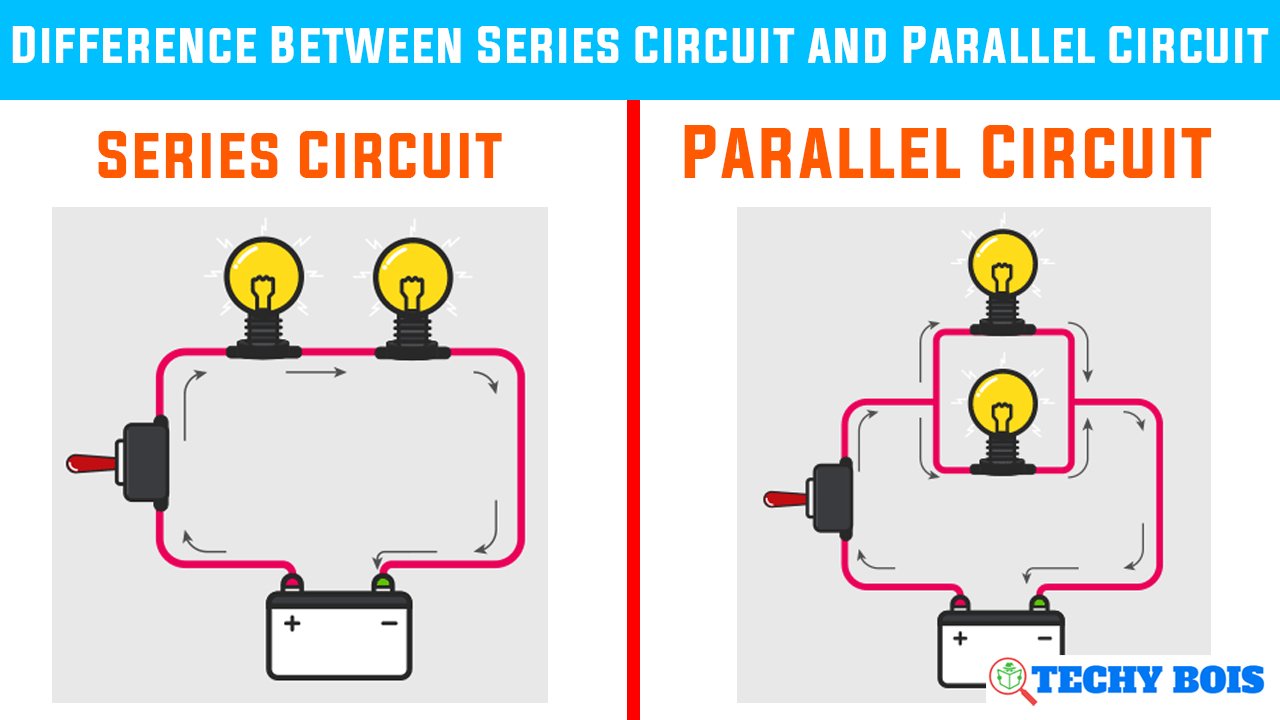Definition of series circuit:
The components in the circuit are connected in one after the other like a series connection. The series connection it permit to connect the tail of the components is connected with head of the another components to the end of the battery. It is also known as a cascaded function. It flow the current to the resistors of the series network the potential difference between various resistors of the circuit.
The drop across every resistance can depend upon the resistance offered by every resistance within the circuit. Thus, we are able to say that, in a very electric circuit thanks to the presence of one path, constant current flows through all the elements. Thereby giving rise to the existence of various potential drop (voltage) across every part.
Definition of parallel circuit:
In a loop, the parts square measure organized in a very means that the heads of every part square measure connected in conjunction with a standard purpose. Where as the tails square measure connected in conjunction with another common purpose.
There by forming multiple parallel branches within the circuit. The figure here shows the parallel association of four resistors in a very circuit: As we will see here that the loop has four branches and completely different current is flowing through every branch. however because the branches square measure sharing common points so identical potential exists across the 2 points write the 2 ends of the battery potential.
It may also be understood in a very means that if identical potential drop is existing across every electrical device of the circuit. Then the particular current flowing through every branch can mechanically rely on the resistance offered by every electrical device within the circuit.
Key points of the series and parallel circuit:
The parts in a very electrical circuit area unit organized in a very single path from one finish of offer to a different finish. However, the multiple parts in a very shunt circuit area unit organized in multiple methods write the 2 finish terminals of the battery.
In a electrical circuit, a standard current flows through all the parts of the circuit. Whereas in a very shunt circuit, a unique quantity of current flows through every parallel branch of the circuit. In the electrical circuit, totally different voltage exists across every element within the circuit.
Where as within the shunt circuit, a similar voltage exists across the multiple parts within the circuit. A fault in one amongst the parts of the electrical circuit causes hindrance within the operation of a whole circuit.
As against fault in a very single element in a very parallel network don’t hinder the functioning of another a part of the circuit. The detection of a fault just in case of a electrical circuit is troublesome, however it’s quite straightforward in parallel circuits.

